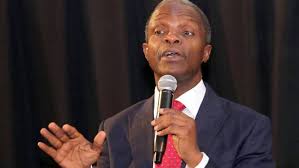Nigeria’s Vice President, Prof. Yemi Osinbajo on Tuesday disclosed that 4G coverage increased from 23% to 77.52% nationwide even as the nation’s broadband coverage had also surged from 33.7% to 44.65% over the past 2 years.
Osinbajo made this disclosure during the 3rd Ministerial Performance Review Retreat in Abuja while appraising improvements recorded by the President Muhammadu Buhari-led administration in the digital economy drive.
He listed some of the key milestones in the digital economy drive as including the deployment of 5G technology and innovative achievements by some technology catalyzers such as Flutterwave, Andela, O-Pay, Jumia, Piggyvest, Interswitch, and Paystack.
The Vice President maintained that transforming Nigeria into a digital economy was a major achievement of the administration, adding that the impressive broadband penetration across the country has been a game changer.
He expatiated: “In August 2019, the broadband coverage was 33.7% and today it is 44.65%, representing close to 13 million new broadband users. There were 13,823 4G base stations and we now have 36,751, representing a 165.86% increase.
“The percentage of 4G coverage across the country also increased from 23% to 77.52%. The expansion has also been helped by the Ministry of Communications and Digital Economy.
“We now have Presidential approval for the 5G policy. In terms of density, 4G allows connection to about 1 million devices in 500 square kilometers, while 5G will allow the same number of devices in just 1 square kilometer. There are also very fast data rates of the 5G and more efficient energy usage”, Osinbajo added.
Elaborating further, he also spoke on the major reduction in data cost from N1,200 per GB in 2019 to about N360 now as the deployment of 5G continues to deepen nationwide, thereby making it easier and cheaper for telecom customers in the country to connect to the Internet.
This is even as the Vice President pointed out that the Ministry of Communications and Digital Economy had flagged off the National Information and Communications Technology Infrastructure Backbone II, (NICTIB II) project to connect 20 states that had hitherto not been connected in NICTIB I with fibre optics.






